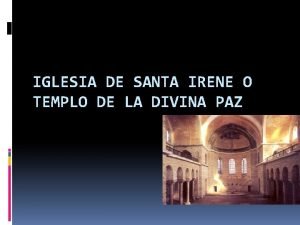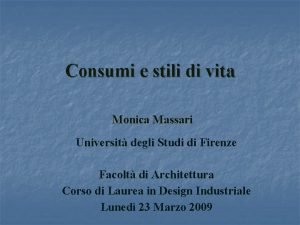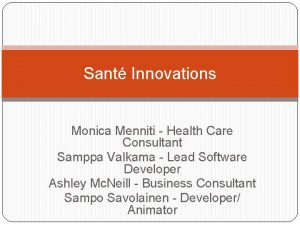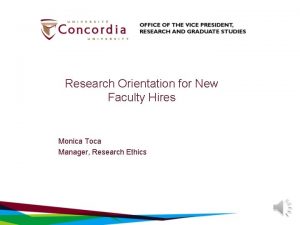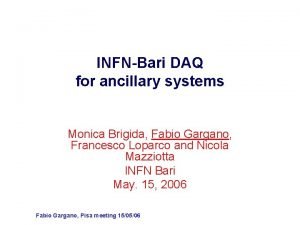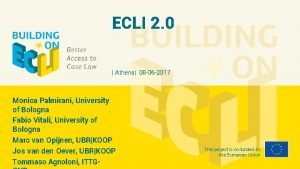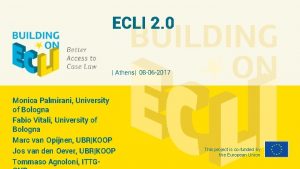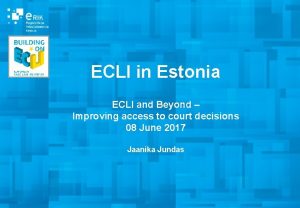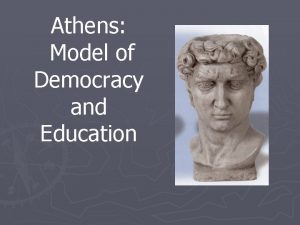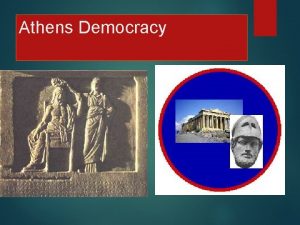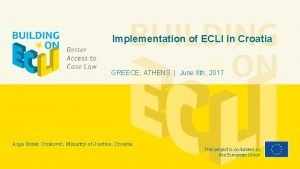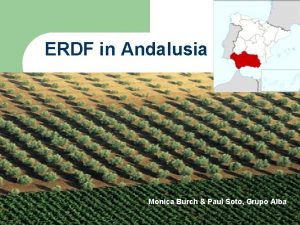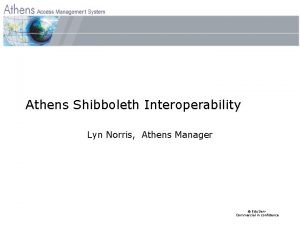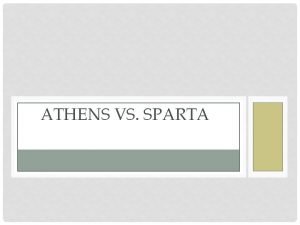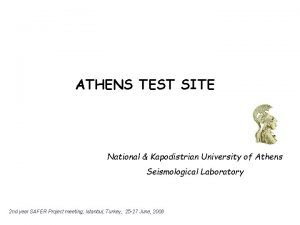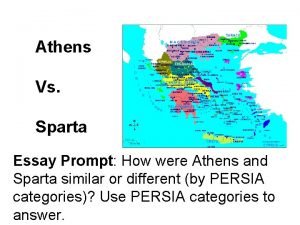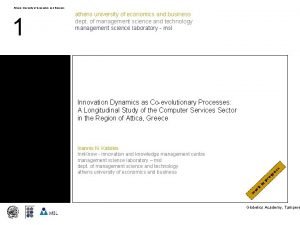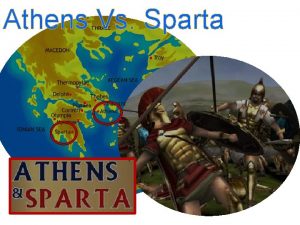ECLI 2 0 Athens 08 06 2017 Monica

























- Slides: 25

ECLI 2. 0 | Athens| 08 -06 -2017 Monica Palmirani, University of Bologna Fabio Vitali, University of Bologna Marc van Opijnen, UBR|KOOP Jos van den Oever, UBR|KOOP Tommaso Agnoloni, ITTG-CNR This project is co-funded by the European Union

ECLI 1. 0 • It has been a methodology for creating a common, flexible, customizable local naming convention for the identifiers of judgments at an abstract level. • Additionally it has defined a common metadata framework. • Each Member State has needed to define its local ECLI identifier syntax and to decide on the minimal dataset to adopt. • It has clearly been a great success! 2

Evolution of a success as an Extension: ECLI 2. 0 ECLI 1. 0 3

Scenario 1 • An Italian judge wants to refer to a judgment of the Court of Justice of the European Union —CJEU, but only to the version in Italian because this is the only language eligible for Italian courts. • ECLI 1. 0 does not allow to refer to an individual version of a judgment in a given language. 1. 0 2. 0 ECLI: EU: C: 2014: 317(: ITA) 4

Scenario 2 • A publishing house creates its own special anonymized collection of heterogeneous judgments, with editorial footnotes. • Scholars want to cite not just the judgment, but the judgement as published by the publishing house. • ECLI 1. 0 does not allow to distinguish the original version from edited version 1. 0 2. 0 ECLI: EU: C: 2014: 317(: KLW) 5

Scenario 3 • A scientific paper wants to make a precise citation to a specific paragraph of the judgment that includes a particular rule of law, really significant for the legal community. • ECLI 1. 0 does not allow to refer to specific fragment of the document. ECLI: EU: C: 2014: 317 1. 0 2. 0 ECLI: EU: C: 2014: 317#para 99 6

Stakeholders survey • • Questionnaires were collected from 28 Member States and from 3 EU courts: the Court of Justice of the European Union —CJEU—, the European Court of Human Rights —ECt. HR— and the Boards of Appeal of the European Patent Organization —EPO. The questionnaire included five sections: i) on the publication process; ii) on data protection policy; iii) on open data strategy; iv) on citation patterns; v) on ECLI adoption. Additionally analysis was conducted about the current state of the art. Two deliverables were produced which are now available on the BO-ECLI web portal. 7

WHY ECLI 2. 0 1° ECLI: 2° country code: 3° code of the court: 4° year: 5° ordinal number Six issues were detected: 1. Mixed information within the fifth element 2. Length of the third element is too limited 3. Unclear subdivision of the information between the elements 4. Need for representation of fragments when the citation points to portions of the text 5. Need for an HTTP-URI syntax for uses in Linked Open Data environments 6. Need for a query language to help the communication between API implementations 8

Benefits of ECLI 2. 0 • Total backward compatibility with ECLI 1. 0. • Harmonization of the syntax for situations at the moment managed with custom technical solutions. • Extensibility of the standard for long-term application of the specifications. • Precision of the details. • Clear distinction between the authentic documents and the versions managed by the commercial publishers. • Compatibility with Linked Data tools and applications. 9

1. Mixed information within the fifth element • Fundamental principles of ECLI identifier are – – – uniqueness, usability, interoperability among different judiciary system practices, clearness and transparency of each part. • Some national legal practices use the number case in the identifier and extra information are routinely included in the fifth element. • • • ECLI 1. 0 ECLI: CE: ECHR: 1993: 0422 JUD 001507089 ECLI 2. 0 ECLI: CE: ECHR: 19930422: JUD 001507089 ECLI 1. 0 ECLI: DE: BVerw. G: 2014: 060314 B 9 C 6. 12. 0 ECLI: DE: BVerw. G: 20140306: B 9 C 6. 12. 0 ECLI 1. 0 ECLI: FR: CESSR: 2014: 351618. 20140326 ECLI 2. 0 ECLI: FR: CESSR: 20140326: 351618. 10

2. Length of the third element is too limited • Several countries need more than seven characters for expressing the court code in order to be closer with their judiciary system citation tradition. • ECLI 2. 0 extends the maximum allowable length of the third element from 7 to 12 characters (only when necessary). 11

3. Unclear subdivision of the information between the elements • • • Several existing legal standards (e. g. , ELI, AKN) already use the FRBR model to clearly organize the legal information ECLI 1. 0 does not discriminate between temporal versions, linguistic variants and/or editorial variants of a text ECLI 2. 0 aims to provide a robust and harmonized method for managing these variants, especially: – To distinguish between authorial documents and edited ones generated by commercial publication processes (EDITORIAL variants) – To identify LANGUAGE variants of the same judgment – To refer to the correct CONTENT versions in case of errors/corrigenda 12

3. 1 Editorial variants • Editoral variants are increasing in the commercial publishing market. It is recommanded to distinguish between the different editoral variants • ECLI: EU: C: 2015: 650(: KLW) 13

3. 2 Language variants CELLAR of Publication Office • <IDENTIFIER>ECLI: EU: C: 2003: 333. HRV</IDENTIFIER> • http: //publications. europa. eu/resource/ecli/ECLI%3 AEU%3 AC%3 A 200 3%3 A 333. HRV • • http: //www. bundesverfassungsgericht. de/Shared. Docs/Entscheidungen/ DE/2009/06/es 20090630_2 bve 000208. html http: //www. bundesverfassungsgericht. de/Shared. Docs/Entscheidungen/ EN/2009/06/es 20090630_2 bve 000208 en. html http: //data. finlex. fi/oikeus/ECLI: FI: KKO: 2001: 51/swe • ECLI 1. 0 ECLI: FI: KKO: 2001: 51 • ECLI 2. 0 ECLI: FI: KKO: 2001: 51(: swe) 14

3. 3 Language and Editor Specifications https: //e-justice. europa. eu/ecli/eu/c/2014/317(aca/v 1/esp)(. html) E-Justice Working Party 31 -01 -2017 Brussels 15

3. 3 Versions over time • • It is infrequent to have versions of the same text over time, but sometimes they do happen ECLI: EU: C: 2014: 317(: ACA: ESP: V 1) • • ECLI 1. 0 ECLI: CZ: NS: 2016: 33. CDO. 4581. 2015. 1 ECLI 2. 0 ECLI: CZ: NS: 2016: 33. CDO. 4581. 2015 (: V 1) 16

4. Representation of fragments • • • Fragment representation when the citation identifies a portion of the text Sometimes the decision citations includes also fragment In order to define a common standard also for this additional part of the reference it is very helpful to provide a mechanism to increase the precision of the technical dereferencing system ECLI: EU: C: 2014: 238(: ACA: ITA: V 1)#part 53 ECLI: EU: C: 2014: 317(: ACA: ESP: V 1)#part 53 -56 (interval) ECLI: EU: C: 2014: 317(: ACA: ESP: V 1)#part 53, 66, 74 (list) 17

5. HTTP-URI syntax • Linked Data initiatives, especially based on RDF models, requires triples to use URIs to identify entities. • A canonical form of ECLI identifiers using HTTP-URI is extremely important to work well with Linked Open Data applications of the ECLI metadata. • ECLI: EU: C: 2014: 317 • http: //ecli. eu/ecli/eu/c/2014/317 18

6. A query syntax for APIs • In order to have metadata really become reusable it is appropriate to have a rich query syntax for the needs of API-based applications. 19

Summary of ECLI 2. 0 identifier types • Work-level (identical to ECLI 1. 0) – ECLI: EU: C: 2014: 317 • code of year: ECLI: country the court: code: Expression-level ordinal number – ECLI: EU: C: 2014: 317(: ACA: ESP: V 1) • code of year: ECLI: country the court: code: Manifestation-level ordinal number editor code lang version – ECLI: EU: C: 2014: 317(: ACA: ESP: V 1)(: PDF) • editor ordinal code of year: ECLI: country code number the court: code: Same identifiers using HTTP/URI syntax – …/ecli/eu/c/2014/317(aca/esp/v 1) format 20

Metadata ECLI 2. 0 WORK • • • Case number Importance of decision Preferred form case sensitive Parties Role (judge/nonjudge) Neutral citation Date of deposit Official language Alias • • EXPRESSION Compiler Creation date (optional) Expression identifier Start date Language Type of expression Authoritativeness MANIFESTATION • • Editor Creation date format Authoritativeness 21

Key take-away points • • • ECLI 2. 0 identifiers are completely backward-compatible. The extension of the fifth element is the only technique used. The extension is optional and in any case easy to tokenize with few lines of code. ECLI 2. 0 does not intend to jeopardize previous investments made by the Member States in the implementation of ECLI 1. 0 or made by other players in the market. Therefore ECLI 2. 0 syntax is an extension of ECLI 1. 0. The extensions can even be implemented gradually and with little impact, in order to manage situations where the tradeoff between clarity, disambiguation and length of the ECLI 1. 0 identifier can become an issue for usability. 22

Demo • http: //akresolver. cs. unibo. it/examp les/ecli. Converter. html 23

References • http: //bo-ecli. eu/uploads/deliverables/Deliverable. WS 3 D 2. pdf • http: //boecli. eu/uploads/deliverables/Deliverable%20 WS 0 -D 1. pdf • http: //akresolver. cs. unibo. it/examples/ecli. Converter. html • http: //sinatra. cirsfid. unibo. it/node/formex 2 akn/ • Paper in CEDEM 2017 conference 24

BO-ECLI www. bo-ecli. eu | info@bo-ecli. eu This presentation has been produced with the financial support of the Justice Programme of the European Union. The contents of this publication are the sole responsibility of the partners of the BO-ECLI project and can in no way be taken to reflect the views of the European Commission. Thank you for your attention! Comments, Questions, Debate This project is co-funded by the European Union
 Iglesia santa irene estambul
Iglesia santa irene estambul Alexandre cabanel biography
Alexandre cabanel biography Monica massari
Monica massari Monica yuskaitis
Monica yuskaitis City of tallulah
City of tallulah Monica white physical therapy
Monica white physical therapy What types of engineers are there
What types of engineers are there Monika palekar
Monika palekar Monica dias ema
Monica dias ema Mona mawari
Mona mawari Monica basco
Monica basco Target master quiz
Target master quiz Monica yukie kuwahara
Monica yukie kuwahara Monica haage
Monica haage Monika pradhan
Monika pradhan Segreteria unibo ravenna
Segreteria unibo ravenna Monica pratesi istat
Monica pratesi istat Monica holmbom sahlgrenska
Monica holmbom sahlgrenska Monica yuskaitis
Monica yuskaitis Monica menniti
Monica menniti Monica toca
Monica toca Monica yuskaitis
Monica yuskaitis Profesori etti upb
Profesori etti upb Sonja andersen
Sonja andersen Fabio gargano
Fabio gargano Luke ravenscroft
Luke ravenscroft
